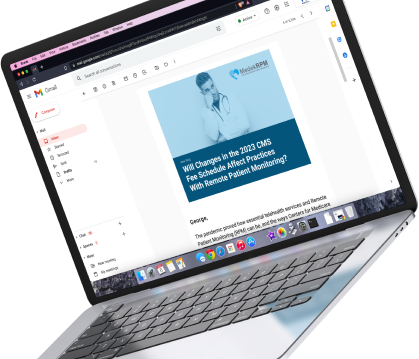
Why Remote Patient Monitoring is Critical for Healthcare Providers?
Remote Patient Monitoring (RPM) provides a secure and efficient way for healthcare providers to monitor patients who are not in their offices. Below, we will discuss some of the benefits associated with RPM.
The use of Remote Patient Monitoring has been on a rise in recent times. This has been made possible with the help of various technological advancements, such as internet connections, smartphones, and wearable devices. All of these factors have helped in bringing down the cost of healthcare services as well as improving patient care by giving them more personalized attention from their doctors while improving compliance.
Studies have shown that patient satisfaction scores are improved when patients are monitored remotely by encrypted monitoring devices. As a result, they are more compliant with their treatment plan and this improves their health outcomes. Patients will also be more likely to adhere to treatment plans since they can receive reminders from the monitoring software without having to rely on someone else for help or follow-ups.
The remote monitoring software can also alert both the patient and the provider if there is an issue that needs attention, such as a fever or infection. This helps make sure that nothing slips through the cracks and no problems go unnoticed until it’s too late.
Why Remote Patient Monitoring is Beneficial for everyone?
RPM solution benefits patients long-term by providing them with the best care possible.
The use of information and communication to monitor patients outside of a clinical setting (is a way to reduce the need for unnecessary admission into hospitals, and it can also help diagnose problems before they become critical.
RPM has many benefits for patients, as well as practices.
For patients, remote monitoring allows them to be monitored from home or another location away from the practice, which can improve their quality of life by reducing stress and anxiety. Patients who are too sick to do an office visit can still be helped by their doctor and can receive the best care from the comfort of their own homes. Also, prescribed medications can be changed if the doctors notice any oddities in the patient’s vitals.
Practices benefit by being able to monitor more patients from afar without having to hire more staff members or purchase expensive equipment. Additionally, this practice can dedicate fewer resources to a bigger patient population without exerting the practitioner’s team and infrastructure.
How to Implement a Successful Remote Patient Monitoring Strategy?
A successful RPM program run by any healthcare organization is the key goal that many practices often fail to implement.
When many practices fail to run their own rpm program, it is usually due to the fact that they do not have a good understanding of what it is and why it works.
One reason healthcare organizations fail to implement a successful RPM program is that they do not know how a successful RPM program should operate. For example, some healthcare organizations may start with a budgeted RPM that is too low, which results in not achieving the desired effect of increasing revenue.
A successful rpm program for a wide-ranging of practices is:
- Increase revenue
- Increases patient engagement, care, and adherence
- Improving patient compliance and patient health
- Decreasing costs over time
A successful rpm program from a patient perspective is:
- Increased medication adherence and patient education
- Increased access to care for rural and underserved populations
- Reduced cost of care and admission into health care facilities
- Improved quality of care through more timely interventions and reduced readmissions
A successful RPM program is not automatic; it requires continuous monitoring of the program through statistical analysis and iteration using different approaches.
Conclusion: How to Harness the Power RPM Technology in practice
RPM technology has the potential to be used by many hospitals and practices. It can be used to improve patient experience, enhance security, and increase compliance. This delivery system of solutions can be used to improve the quality and efficiency of care delivery. It can help to improve the lives of people with disabilities, the elderly, and those who are disadvantaged within the health system.
The use of Remote Patient Monitoring technology in healthcare is not a new concept. But, it is one that is quickly growing. The use of AI and technology in healthcare has the potential to improve patient care as well as reduce costs.With current technology developments, more practices have an opportunity to leverage big data analytics in order to make better decisions about patient care and reduce healthcare costs. Learn how to achieve this with Medek.





